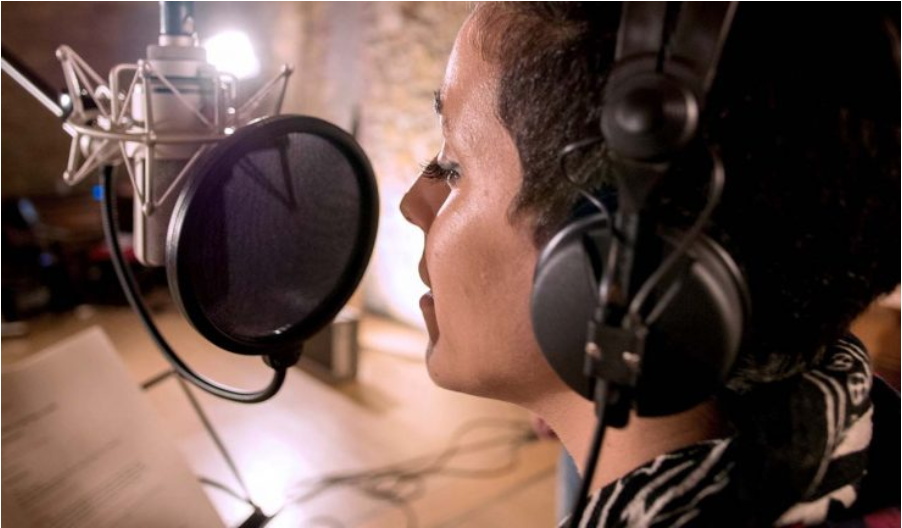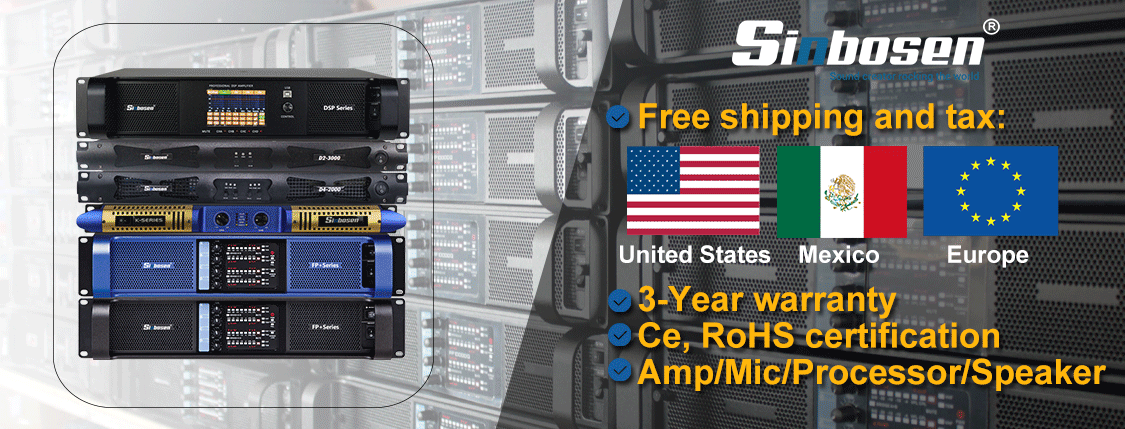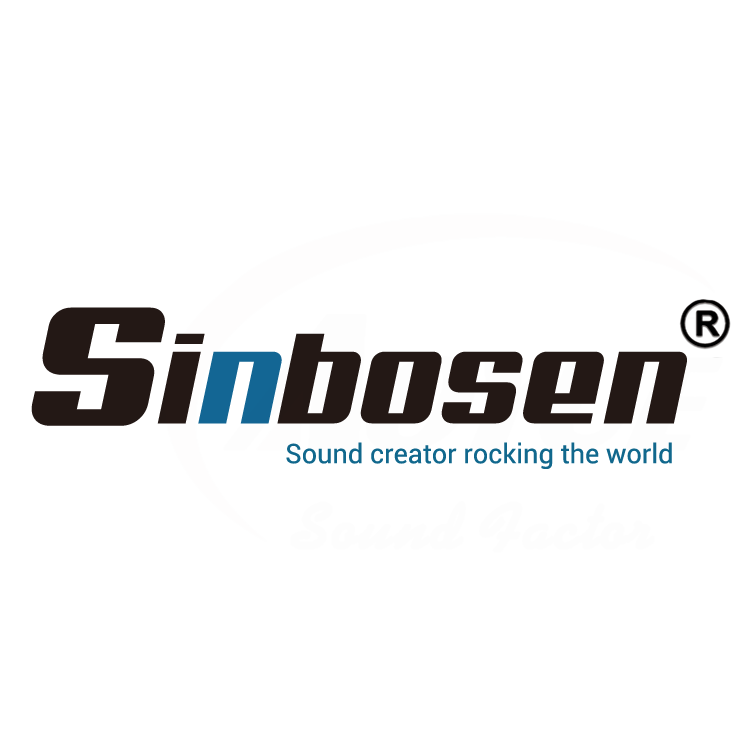How a novice handles vocals with equalizers?
Views : 9629
Update time : 2022-02-25 14:38:45
Equalize the recorded singing in order to make the "original" vocals feel like "release level". Vocal equalization involves editing multiple tracks to enhance the quality and color of the recorded vocals. The idea of improving is to make the sound as clean and natural as possible in the overall mix. In general, only small changes can make a noticeable difference.
For high-quality vocal performances, too much equalization should not be done arbitrarily. Just doing a few things to filter out low frequencies, boost high frequencies, and attenuate harsh frequencies is enough to change the sound of a track. As you become more proficient with vocal EQ, you'll quickly notice an improvement in the overall quality of your mix.

Part ONE:Which key points you need pay attention one?
Attention 1:The frequency of the key points to pay attention to
When performing vocal equalization, it is necessary to understand the influence of each frequency on the music. Keeping these frequencies in mind will allow you to avoid unnecessary attempts and allow you to process them efficiently.
It should be noted that the following frequencies are approximate ranges, and each artist's voice will be different. Of course, these frequency bands can still provide you with a good starting point:
100 - 300 Hz: warm full
500 - 800 Hz: Box feel
800 - 1.5 kHz: Nasal
3 - 6 kHz: Presence
4 - 7 kHz: sibilance
10 - 15 kHz: Airy
In addition to the different performance of each artist, the space and equipment used for recording will also affect these frequency bands. For most cases, the above frequency bands will help you basically cover the main EQ range.
Attention 2:If you want to master these frequency bands well, it is recommended to spend some time simply practicing in these positions. You will gradually grasp the effect of these areas on the overall sound of the song. As you become more proficient, the faster, more precise, and more precise you will be able to handle the pre-work of the vocal track - the technique of high-quality vocal equalization.
1. Use high-pass filtering
When you're EQing a vocal, the first step is usually high-pass filtering. This action helps remove any unwanted background frequencies, keeping the vocals clean and clear.
First you need to set the high pass filter cutoff frequency around 100Hz. The slope of the curve needs to be chosen to be gentle, so that nothing below 100Hz is cut off abruptly, causing the sound to become unnatural and lose its fullness. As mentioned before, even small actions like this can make a huge difference.
When recording vocals, it is very common for recording engineers to use preamps with high-pass filtering. The cutoff frequency of this filter is generally between 60Hz and 80Hz. If you want more depth and depth to your vocals, you can move the cutoff frequency above 80Hz.
Here is a good rule of thumb. When adjusting the high-pass filter, it is usually better to lower the cutoff frequency to a place where the fullness of the sound is not affected.
2. Equalize each track individually
While there are a few techniques that can be used to simplify the vocal mix of an entire song, such as creating a vocal bus (more on that below), it's still no substitute for spending time on each individual track to make changes. Because individual EQ allows you to find all the problem bands and unbalanced bands that need fine-tuning.
While it’s important to pay attention to the big picture of your mix, knowing how to deal with the little details that seem unimportant will also improve the overall quality of the song. This goes back to what we said above about small changes making a big difference.
The point is that we both want to keep the macro mix and take the time to fine-tune each individual vocal track so that the vocals sound tight without any excess.
3. Vocal bus for overall equalization
It is very common practice for experienced mixers to use their favorite vocal effects chain on the bus, which will bring great convenience when choosing to connect vocals to the bus. These chains typically include compressors, de-essing effects, and EQs; of course, the same goes for any other element's bus.
By setting up an EQ chain on the bus to process all the vocals connected to the bus at once, you can create a consistent, integrated vocal effect. At this point you need to pay special attention to the processing of high and low frequencies.
If you've high-pass filtered around 100Hz, you can also attenuate it between 250Hz and 300Hz. This helps remove the turbidity that exists between 100Hz and 300Hz in most vocal recordings. But at the same time be careful not to attenuate too much, otherwise the vocals will thin and lose their vitality.
If you want to sound brighter, you can slightly raise the 10kHz to 12kHz position on the bus EQ, which should make the sound more vivid.
In order to ensure the sound of the human voice, the main voice should generally be separated from the background vocals and harmony. When using equalization, make sure that the background vocals sit reasonably behind the main vocals, neither covering the main vocals nor distracting the listener from the main vocals.
One of the specific methods is to filter out some high frequencies of the background vocals. A typical low-pass filter setting between 6kHz and 8kHz can remove the background vocals from interfering with the main vocals while preserving their depth.
2. Phone sound equalization
Equalization of phone tones is common on records, as well as in scenes that mimic the filtered texture of old phones. This effect is most used in pop and hip-hop, but a variety of other genres are also involved.
Using an equalizer to make phone sounds is actually very simple, in fact, many equalizers come with presets. You can also achieve a phone tone effect by limiting the frequency band by bandpass filtering, which is actually doing a high-pass and low-pass operation at the same time. If you want to make the sound more crispy, you can amplify the effect by boosting the mids.
On the way to improve the overall quality of the song, mastering the use of equalization and knowing the feeling of each frequency band can save you a lot of time and greatly improve work efficiency.
If you have other good idea,you can show us:
Website:https://www.sinbosenaudio.com/

For high-quality vocal performances, too much equalization should not be done arbitrarily. Just doing a few things to filter out low frequencies, boost high frequencies, and attenuate harsh frequencies is enough to change the sound of a track. As you become more proficient with vocal EQ, you'll quickly notice an improvement in the overall quality of your mix.

Part ONE:Which key points you need pay attention one?
Attention 1:The frequency of the key points to pay attention to
When performing vocal equalization, it is necessary to understand the influence of each frequency on the music. Keeping these frequencies in mind will allow you to avoid unnecessary attempts and allow you to process them efficiently.
It should be noted that the following frequencies are approximate ranges, and each artist's voice will be different. Of course, these frequency bands can still provide you with a good starting point:
100 - 300 Hz: warm full
500 - 800 Hz: Box feel
800 - 1.5 kHz: Nasal
3 - 6 kHz: Presence
4 - 7 kHz: sibilance
10 - 15 kHz: Airy
In addition to the different performance of each artist, the space and equipment used for recording will also affect these frequency bands. For most cases, the above frequency bands will help you basically cover the main EQ range.
Attention 2:If you want to master these frequency bands well, it is recommended to spend some time simply practicing in these positions. You will gradually grasp the effect of these areas on the overall sound of the song. As you become more proficient, the faster, more precise, and more precise you will be able to handle the pre-work of the vocal track - the technique of high-quality vocal equalization.
Part TWO:HOW to through some high-quality vocal equalization techniques?
1. Use high-pass filtering
When you're EQing a vocal, the first step is usually high-pass filtering. This action helps remove any unwanted background frequencies, keeping the vocals clean and clear.
First you need to set the high pass filter cutoff frequency around 100Hz. The slope of the curve needs to be chosen to be gentle, so that nothing below 100Hz is cut off abruptly, causing the sound to become unnatural and lose its fullness. As mentioned before, even small actions like this can make a huge difference.
When recording vocals, it is very common for recording engineers to use preamps with high-pass filtering. The cutoff frequency of this filter is generally between 60Hz and 80Hz. If you want more depth and depth to your vocals, you can move the cutoff frequency above 80Hz.
Here is a good rule of thumb. When adjusting the high-pass filter, it is usually better to lower the cutoff frequency to a place where the fullness of the sound is not affected.
2. Equalize each track individually
While there are a few techniques that can be used to simplify the vocal mix of an entire song, such as creating a vocal bus (more on that below), it's still no substitute for spending time on each individual track to make changes. Because individual EQ allows you to find all the problem bands and unbalanced bands that need fine-tuning.
While it’s important to pay attention to the big picture of your mix, knowing how to deal with the little details that seem unimportant will also improve the overall quality of the song. This goes back to what we said above about small changes making a big difference.
The point is that we both want to keep the macro mix and take the time to fine-tune each individual vocal track so that the vocals sound tight without any excess.
3. Vocal bus for overall equalization
It is very common practice for experienced mixers to use their favorite vocal effects chain on the bus, which will bring great convenience when choosing to connect vocals to the bus. These chains typically include compressors, de-essing effects, and EQs; of course, the same goes for any other element's bus.
By setting up an EQ chain on the bus to process all the vocals connected to the bus at once, you can create a consistent, integrated vocal effect. At this point you need to pay special attention to the processing of high and low frequencies.
If you've high-pass filtered around 100Hz, you can also attenuate it between 250Hz and 300Hz. This helps remove the turbidity that exists between 100Hz and 300Hz in most vocal recordings. But at the same time be careful not to attenuate too much, otherwise the vocals will thin and lose their vitality.
If you want to sound brighter, you can slightly raise the 10kHz to 12kHz position on the bus EQ, which should make the sound more vivid.
Part THREE:Have other available tips for high-quality vocal?
1. Separate the lead vocals and background vocals for equalizationIn order to ensure the sound of the human voice, the main voice should generally be separated from the background vocals and harmony. When using equalization, make sure that the background vocals sit reasonably behind the main vocals, neither covering the main vocals nor distracting the listener from the main vocals.
One of the specific methods is to filter out some high frequencies of the background vocals. A typical low-pass filter setting between 6kHz and 8kHz can remove the background vocals from interfering with the main vocals while preserving their depth.
2. Phone sound equalization
Equalization of phone tones is common on records, as well as in scenes that mimic the filtered texture of old phones. This effect is most used in pop and hip-hop, but a variety of other genres are also involved.
Using an equalizer to make phone sounds is actually very simple, in fact, many equalizers come with presets. You can also achieve a phone tone effect by limiting the frequency band by bandpass filtering, which is actually doing a high-pass and low-pass operation at the same time. If you want to make the sound more crispy, you can amplify the effect by boosting the mids.
Nothing is more important than experience and experimentation when it comes to vocal equalization skills. Because every artist and recording engineer is different, their preferences and recording methods are different.
On the way to improve the overall quality of the song, mastering the use of equalization and knowing the feeling of each frequency band can save you a lot of time and greatly improve work efficiency.
If you have other good idea,you can show us:
Website:https://www.sinbosenaudio.com/









